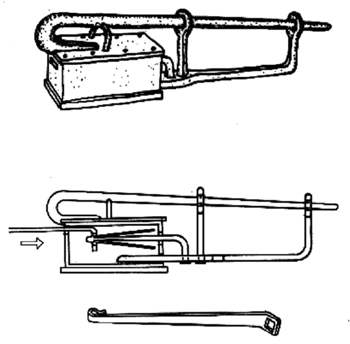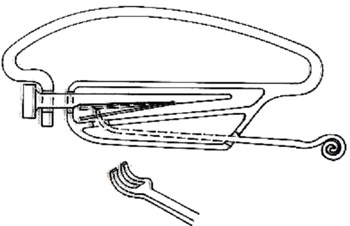 |
| Padlocks from Roman-era Essex in England. Sketch by the author. |
This is a padlock based on another important Roman invention: steel ward springs. The opening in the key bow compresses the two springs to release the bolt.
 |
| Padlock from Sweden, Uppland province. Vendel Era. Sketch by the author. |
The Museum of National Antiquities in Stockholm has placed a padlock with dual ward springs at the Nordiska Museet, or Nordic museum. When locked, the springs rest against a wall of the lock body with two notches that match a key with corresponding dual bits. The two curved bits of the key fit into the notches and depress the springs to free the shackle. The lock was a treasure found in the province of Uppland. It is made of wrought iron and is a technical predecessor of medieval spring padlocks, which have an arched swivel shackle and separate springs. The difference is the way the key works, and that the shackle of the Uppland lock is fused with the lock body.